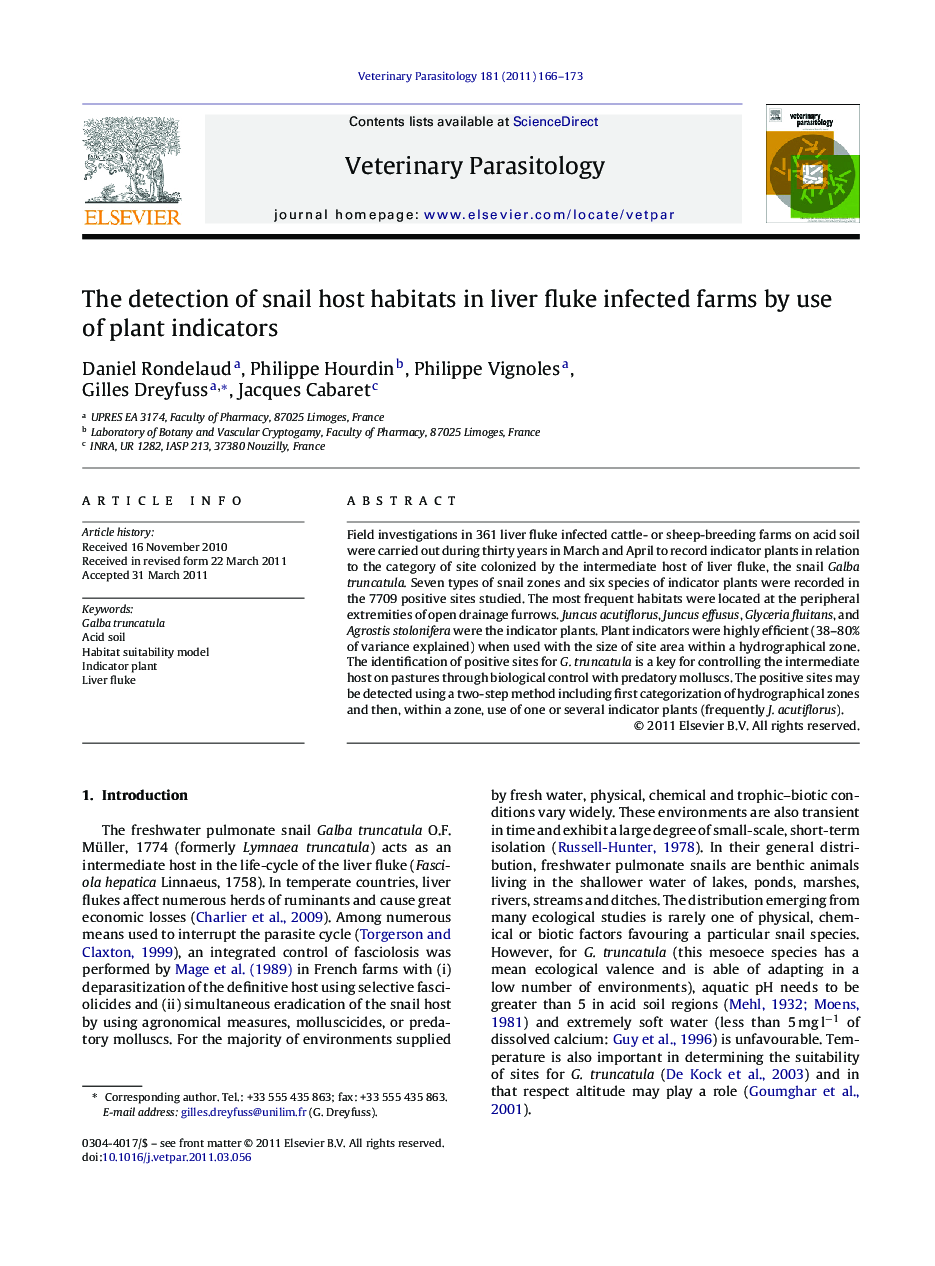| Article ID | Journal | Published Year | Pages | File Type |
|---|---|---|---|---|
| 5805438 | Veterinary Parasitology | 2011 | 8 Pages |
Field investigations in 361 liver fluke infected cattle- or sheep-breeding farms on acid soil were carried out during thirty years in March and April to record indicator plants in relation to the category of site colonized by the intermediate host of liver fluke, the snail Galba truncatula. Seven types of snail zones and six species of indicator plants were recorded in the 7709 positive sites studied. The most frequent habitats were located at the peripheral extremities of open drainage furrows. Juncus acutiflorus, Juncus effusus, Glyceria fluitans, and Agrostis stolonifera were the indicator plants. Plant indicators were highly efficient (38-80% of variance explained) when used with the size of site area within a hydrographical zone. The identification of positive sites for G. truncatula is a key for controlling the intermediate host on pastures through biological control with predatory molluscs. The positive sites may be detected using a two-step method including first categorization of hydrographical zones and then, within a zone, use of one or several indicator plants (frequently J. acutiflorus).
